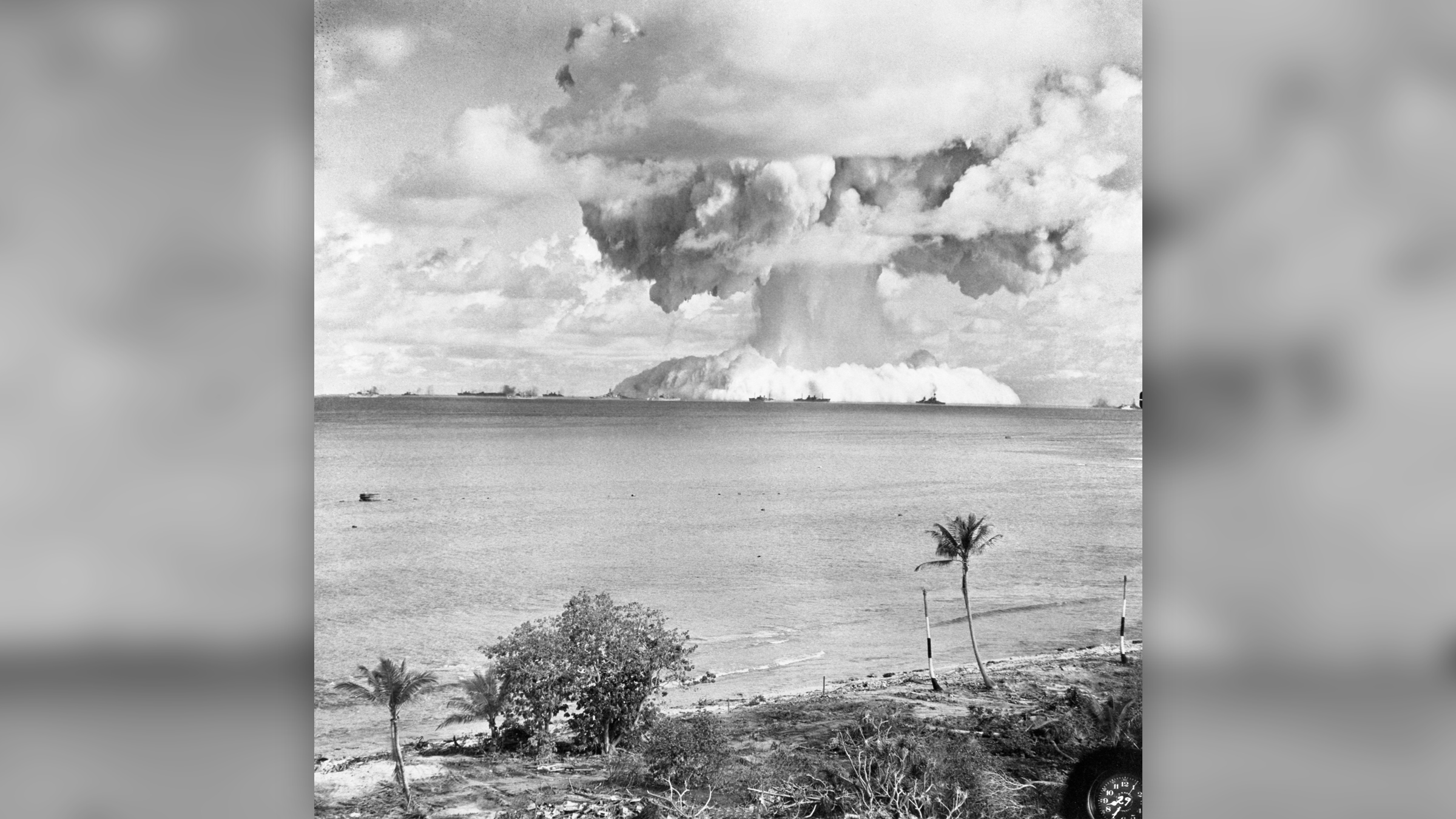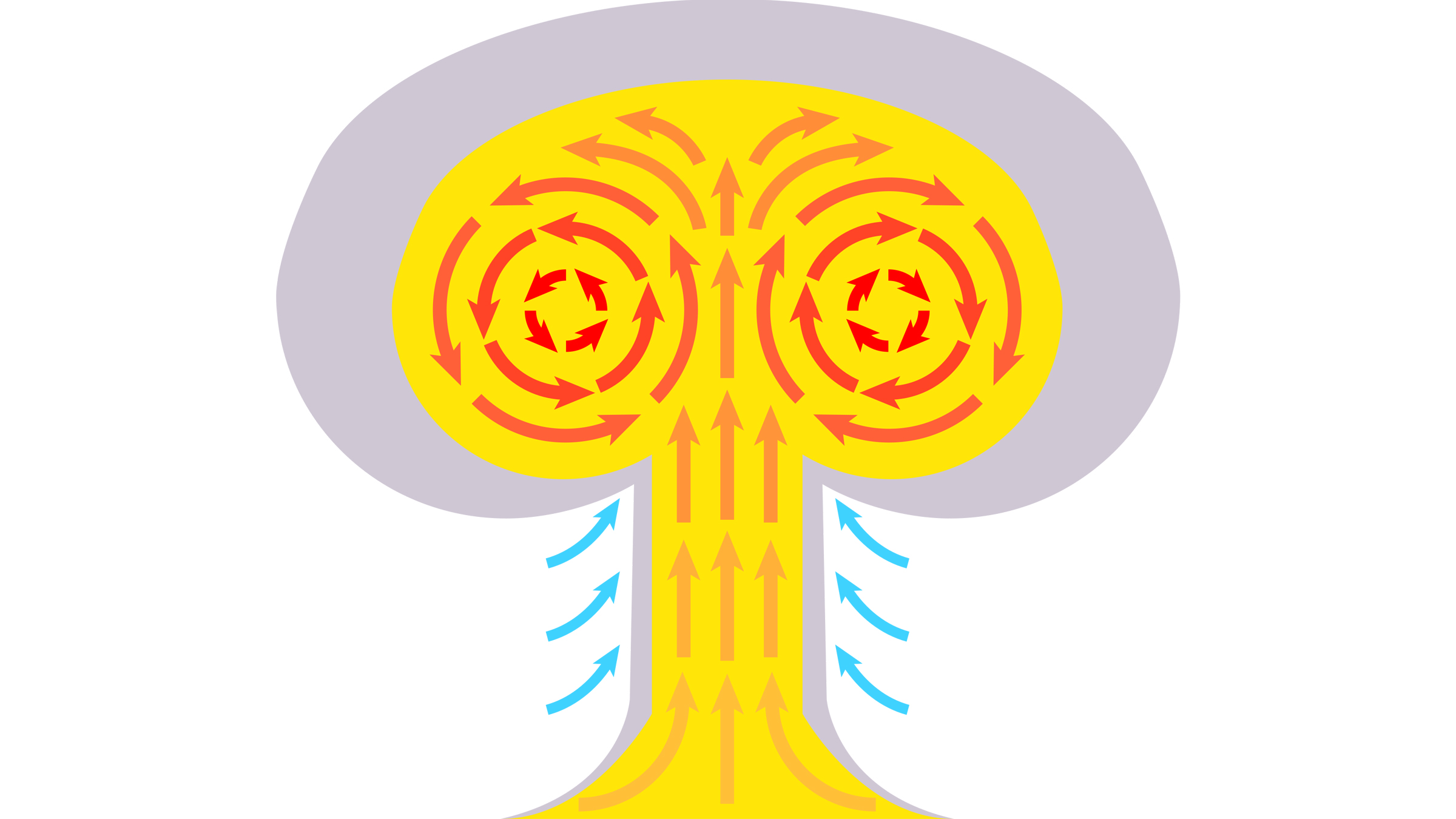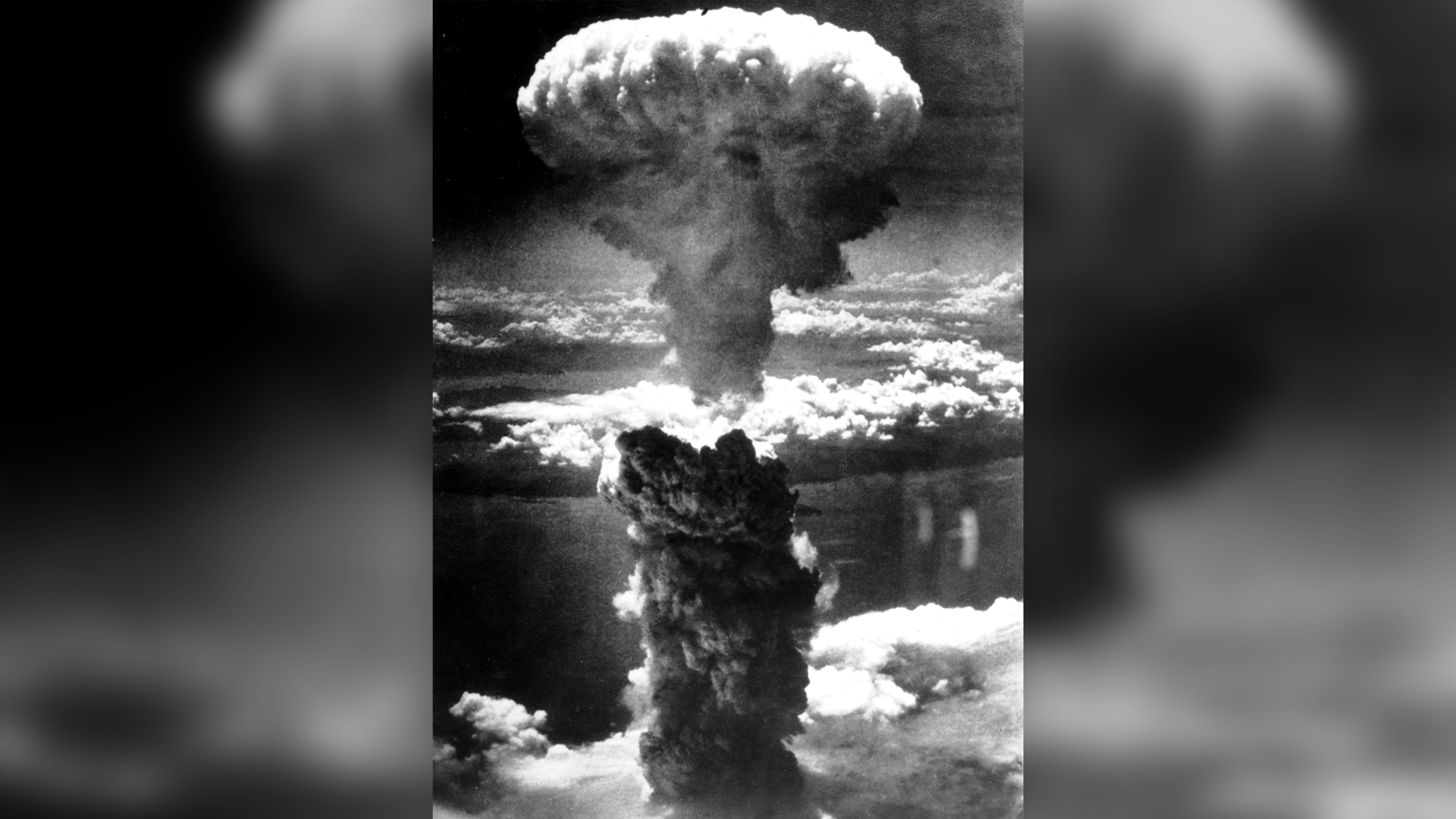
Why do nuclear bombs form mushroom clouds?
What forms this iconic shape?

When a bomb goes off, energy is shot out indiscriminately in all directions. So, instead of an expanding ball of fire, why do nuclear explosions result in mushroom clouds?
Although the outburst of energy does initially form a sphere of hot air, that's only the beginning of the story, according to Katie Lundquist, a researcher of computational engineering at Lawrence Livermore National Laboratory in California. Because hot air rises, the larger bulk of the sphere in the middle column — where the core of an apple would be — experiences more buoyancy than the edges do.
"The way that a sphere is shaped, you have the largest column of the low-density fluid in the middle, so that rises the fastest," like the middle of a cupcake rising in the oven, Lundquist said. (Although in vernacular English we tend to use "fluid" and "liquid" interchangeably, for scientists, the term "fluid" can refer to either a liquid or a gas; both lack a fixed shape, are able to flow and can be described by the same suite of mathematical equations, according to Lundquist.)
Related: How many atoms are in the observable universe?
Although the entire sphere rises, because this middle column elevates with greater urgency, the cooler air outside the sphere begins to "rush in below the bubble that's rising," Lundquist told Live Science.
This causes the rising bubble to distort into a torus, or doughnut shape. And because hot air molecules move around rapidly in their energized state, bouncing off each other at high velocities, they end up creating so much space between themselves that they form a near vacuum. There's "this jet of material that's being sucked into the vacuum that's pushing up, and so that forms the mushroom cloud on the top and the flatter area within the torus on the bottom," Lundquist said. This jet, which sucks up dirt and debris, forms the stem of the mushroom even as it feeds into the mushroom cap.

Nuclear bombs dropped during wartime and scientific experiments show that mushroom clouds can form on Earth, but what about in space? If the moon were nuked, would a mushroom cloud occur? Lundquist said the answer is "no."
Sign up for the Live Science daily newsletter now
Get the world’s most fascinating discoveries delivered straight to your inbox.
"You need an atmosphere so they can have that fluid material," such as air, she said. "It's not going to happen in a vacuum." The moon's airless environment would have no way of distorting the initial sphere into a torus, and there would be no difference in air densities to suck up that pillar of material to grow the cloud.
Related: The Marshall Islands are 10 times more 'radioactive' than Chernobyl
Just as there are different species of mushrooms, there are varieties of mushroom clouds. Depending on the explosive yield of the bomb and the height at which it goes off, the resulting mushroom cloud will have different features. Explosions like the ones that took place over Hiroshima and Nagasaki, Japan, at the denouement of the second world war had two main parts. One part comprised the billows of white cloud above, made from the vaporized products of the bomb itself and condensing water from the surrounding air. The other part was a stem of brown material and debris stretching up from the ground. But the two didn't quite make contact, as you can see in the below photo.

There's "a very distinct white cloud, and then a brown below that," Lundquist said. The cap and stem on these clouds did not meet, because the bombs were detonated high up, nearly 2,000 feet (610 meters) aboveground. And although they wrought devastating amounts of damage, they were quite weak compared with later-made weapons, exploding with the force of around 20 kilotons of TNT or less, according to the U.S. Department of Energy. (On the other end of the spectrum, the Soviet Union's Tsar Bomba had a yield of 50,000 kilotons of TNT.)
Among the tested nuclear bombs that were stronger and/or exploded closer to the ground, the stem and cap merged into the classic mushroom profile, Lundquist said.
Lundquist and her lab colleagues study these effects so that, in the event of a nuclear crisis, they would be able to "know where the radiological particles are to correctly predict fallout and then provide guidance on consequence management that would protect public health."
While the threat of nuclear doomsday is real, the combined arsenals of the world contain nearly 10,000 nuclear bombs, down from over 60,000 in the 1980s, according to the Bulletin of the Atomic Scientists.
Originally published on Live Science.










